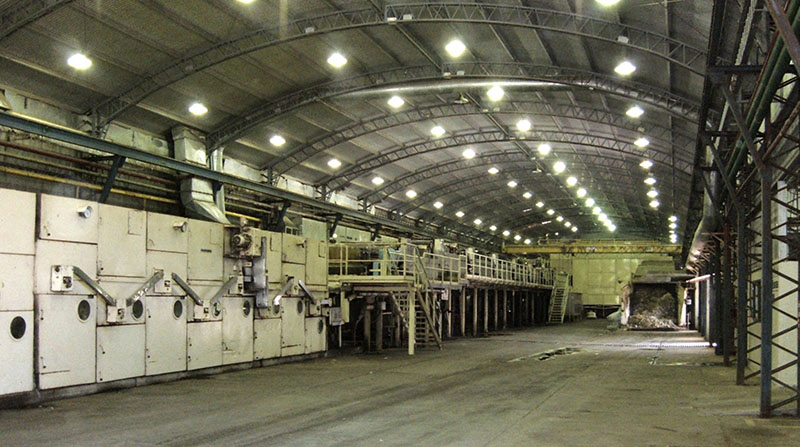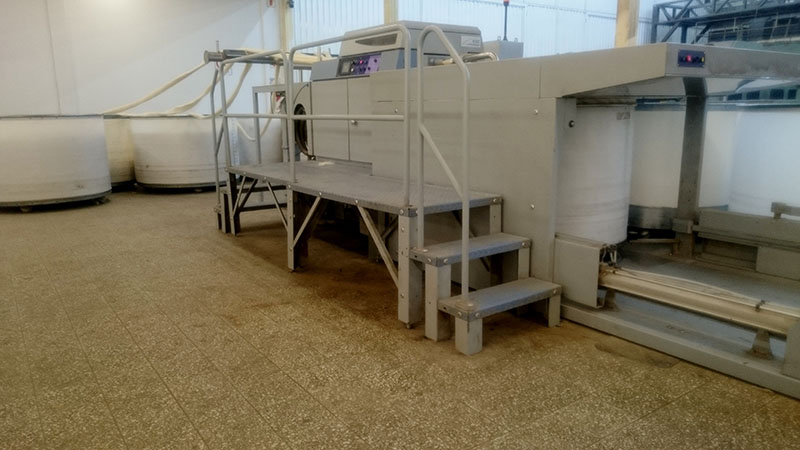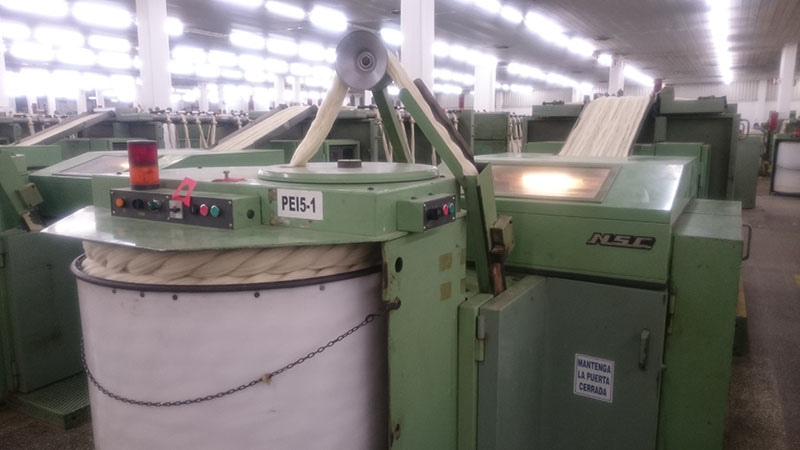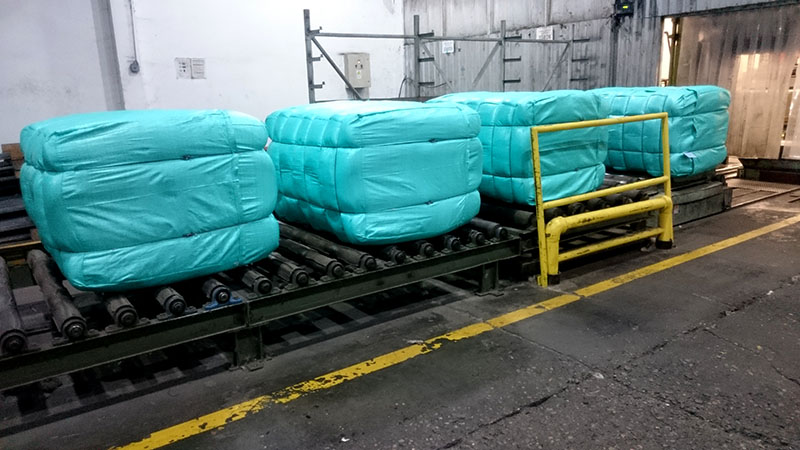
|
|
|
Batches are prepared in light of the requirements of our clients and sent to be processed by the plant in batches of around 5,0000 kg each. All this process is monitored by a program similar to SCADA, called Fix, adjusted based on parameters established by the quality management system. The processes are the following: WASHING When arriving to the plant, batches are made available to the washing place. Given their greasy nature, fleece withhold dust and vegetal waste up to 40 % of their weight. In the subsequent washing baths, biodegradable detergent is added to the first washing troughs using a backwash reflux procedure to save water and detergent; after the washing troughs, the wool is rinsed also by a re-circulation mechanism. Once the washing is finished, the washed wool is sent to the drying room, which, through gas heaters, dries the wool while it moves forward in such room. Before moving on to carding, an anti-static solution and mineral oil is added to the dried wool to help its processing and reduce static. The plant has a laboratorian that works on shifts 24 hours a day, in charge of checking that the product is under the quality standards established for the batch during the whole process. When exiting the drying room, the washed wool is analyzed regarding the humidity percentage it has, as well as the fat content. It is essential to highlight that the wool fat is recovered as washing by-product. The plant has a system that guarantees a high percentage of fat extraction, which allows not only to have a good volume, but also guarantees a better wool processing while going through the next carding and combing stages. This fat, which is exported by over 90 %, is re-processed by our clients to obtain lanolin to be used in the pharmaceutical industry, dyes, tannery, etc.  CARDING The carding section has several purposes:
All this is achieved when the wool is processed with machines called Wool Cards, which are in charge of making all this actions uniformly The wool card is made up by a number of cylindrical revolving organs called opener, drum, worker, cleaner, and doffer, which are covered by steel elastic points with a saw sprocket shape. A by-product known as bean arises from this process, which is wool with seeds and vegetables falling during carding. PREPARATION The fibers that make up the band when exiting the wool card are not rigorously aligned. Some are still tangled, thus, before combing the product we have obtained and that has to move on to the following stage, it is necessary this intermediate process that unfelts them, that is to say, parallelizing and straighten the fibers. The procedure consists in a series of steps performed by band bending and stretching machines whose main duties are to reduce mass and mixture irregularities and to homogenize and parallelize fibers.  COMBING The purpose of combing is processing fiber locks produced by wool cards in such a way that, once the wool exits this stage, if free from all short fibers and different impurities that were still in the product. An uncombed lock has an important amount of imperfections that prevent from obtaining a fine, smooth, and rounded thread. The combing machines capacity depends exclusively on the fineness of the wool being processed, because, as expressed when we mentioned the different types of wool, the process for a Merino wool is not the same as for mixed wools or Creole wools. Two by-products are obtained from this process:
Combing is an essential stage to which wool needs to go through in order to achieve the desired quality; therefore, once finished, wool is taken to an internal lab to verify its quality.  TERMINATION Having concluded with the foregoing operations, it is time for the termination stage. The purpose of this section is regularizing bands to be produced in a given weight and with a given shape, and it generally comprises two gill steps:
PRESS The different coils and bumps are put on carriages that will be processed in the press section. Here they are packed in bundles for their final delivery to clients. The plant has two presses, one to prepare 400-mm bundles and another for bundles with 800-mm bumps. Bundles are prepared by the use of two woven poly-woven lids and, in order to provide greater protection, recycled nylon is added inside. In order to hold it back, wires with a quick-link system are used, two in longitudinal sense and six in transversal sense. Coil bundles weigh around 500 kg, 400-mm bump bundles around 420 kg, and 800-mm bump bundles around 550 kg. Once finished, the bundle is weighted, labeled, and registered with number and batch to the stock system. It will remain in the store until shipped to the port for export.  |
|